Storm damage unprecedented
Some areas to be without power for days: more than 1,000 poles damaged
Advertisement
Read this article for free:
or
Already have an account? Log in here »
To continue reading, please subscribe:
Monthly Digital Subscription
$0 for the first 4 weeks*
- Enjoy unlimited reading on winnipegfreepress.com
- Read the E-Edition, our digital replica newspaper
- Access News Break, our award-winning app
- Play interactive puzzles
*No charge for 4 weeks then price increases to the regular rate of $19.00 plus GST every four weeks. Offer available to new and qualified returning subscribers only. Cancel any time.
Monthly Digital Subscription
$4.75/week*
- Enjoy unlimited reading on winnipegfreepress.com
- Read the E-Edition, our digital replica newspaper
- Access News Break, our award-winning app
- Play interactive puzzles
*Billed as $19 plus GST every four weeks. Cancel any time.
To continue reading, please subscribe:
Add Free Press access to your Brandon Sun subscription for only an additional
$1 for the first 4 weeks*
*Your next subscription payment will increase by $1.00 and you will be charged $16.99 plus GST for four weeks. After four weeks, your payment will increase to $23.99 plus GST every four weeks.
Read unlimited articles for free today:
or
Already have an account? Log in here »
Hey there, time traveller!
This article was published 14/10/2019 (2252 days ago), so information in it may no longer be current.
Josephine Thaddeus is wondering when she can go home again.
Her house in Fisher River is icy cold: it hasn’t had electricity or heat in over four days. Standing outside in downtown Winnipeg Monday morning, all she could wonder was where she’d be going next, and how long it would take before she could sleep in her own bed, not in a hotel room or a cot on the convention centre floor.
“It’s quite the displacement, I tell you,” said Thaddeus, one of at least 3,300 evacuees from First Nations across Manitoba registered with the Canadian Red Cross after the devastation caused by one of the largest October snowfalls on record, an unseasonable torrent of precipitation that left the province in awe.
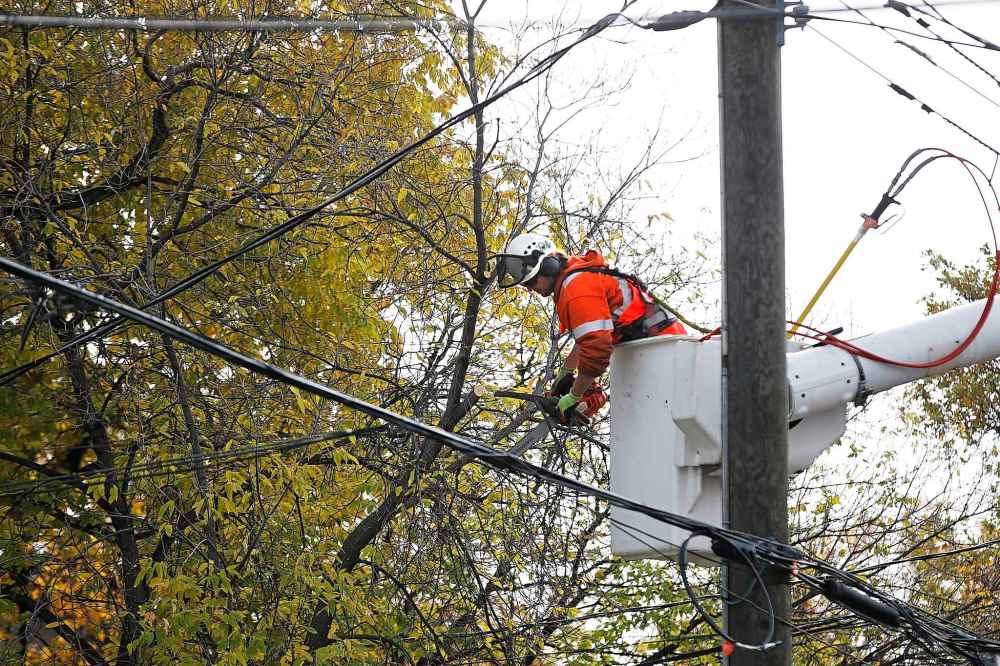
“I’ve never seen anything like it,” she said.
Nobody in Manitoba has seen anything like it because there has never been anything like it, and communities across Manitoba have never been so powerless against the forces of nature: in all, more than 150,000 Manitoban residences and businesses lost power, leaving entire cities and towns in the dark for as much as 72 hours or longer.
The province, the City of Winnipeg and dozens of other municipalities have declared states of emergency to deal with the aftermath.
The snow has stopped falling, and temperatures are rising, but the fallout of the storm will be felt and seen for weeks and months to come: the wreckage is unprecedented, and as Hydro crews worked overtime throughout the weekend to assess the damage, some estimates said there were more poles down on the ground than standing up.
“The damage is on a scale never seen before in Manitoba,” Manitoba Hydro president and CEO Jay Grewal said.
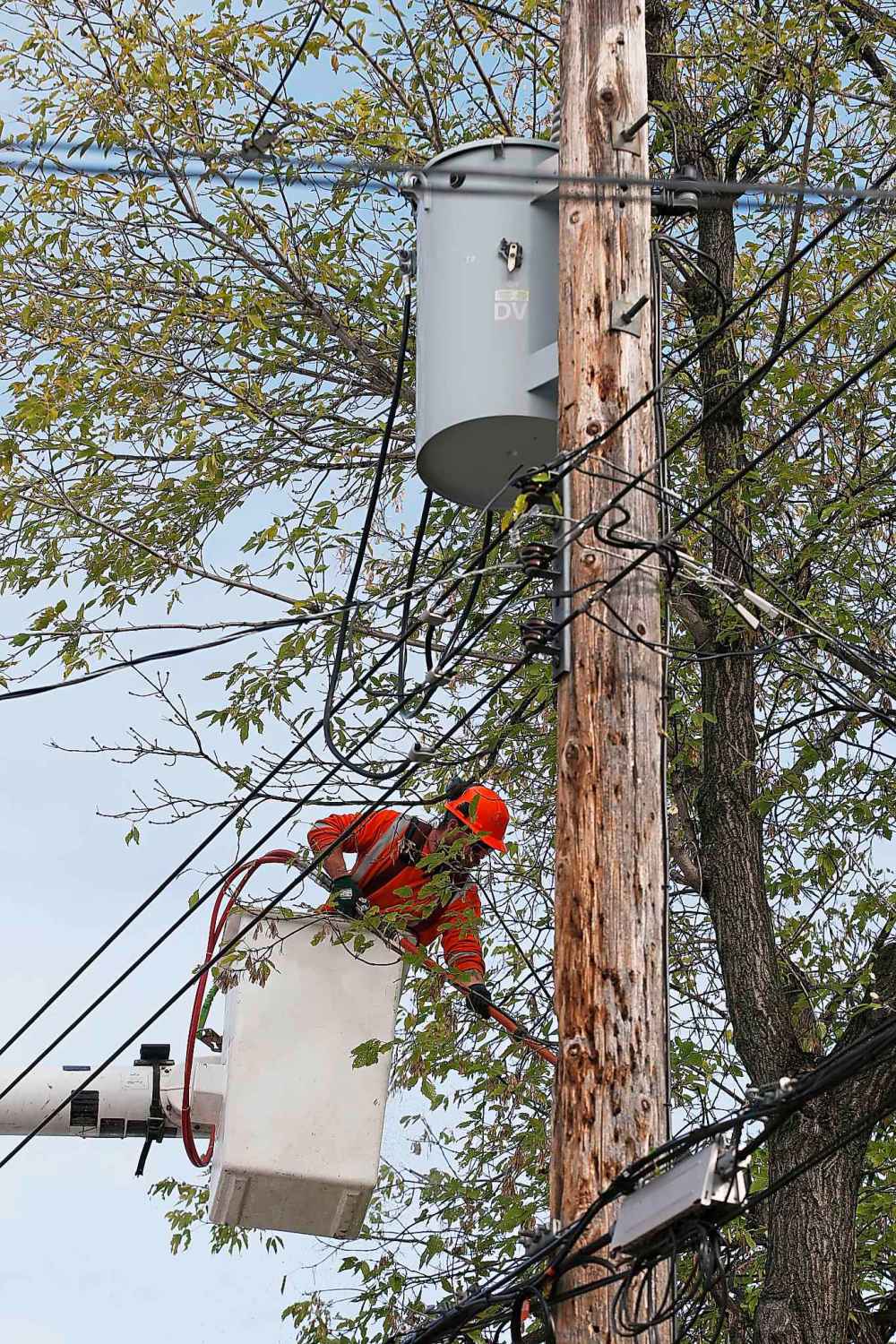
For the first time, Hydro enacted its mutual-aid agreements with neighbouring utilities, bringing in more than 50 operators and several pieces of heavy repair equipment from Saskatchewan, Ontario and Minnesota power providers to deal with the overwhelming workload.
SaskPower is sending five diggers, two bucket trucks and one tracked crane to assist Hydro’s efforts, along with 21 operators to help in Portage, Neepawa, and Dauphin. Ontario’s Hydro One is providing several pieces of equipment and 20 operators to work in the Interlake. Minnesota Power is providing equipment and 14 staff to assist in Portage.
The added equipment was required to get into areas too wet to access without specialized vehicles.
Much of the damage is complicated, and work by crews will continue even after power is restored, Grewal said.
With fewer than 1,000 homes in Winnipeg left without power as of Monday afternoon, Hydro said the entire capital should be restored by Thursday; however, in certain rural areas, it could be as long as 10 days before they can turn on their lights.
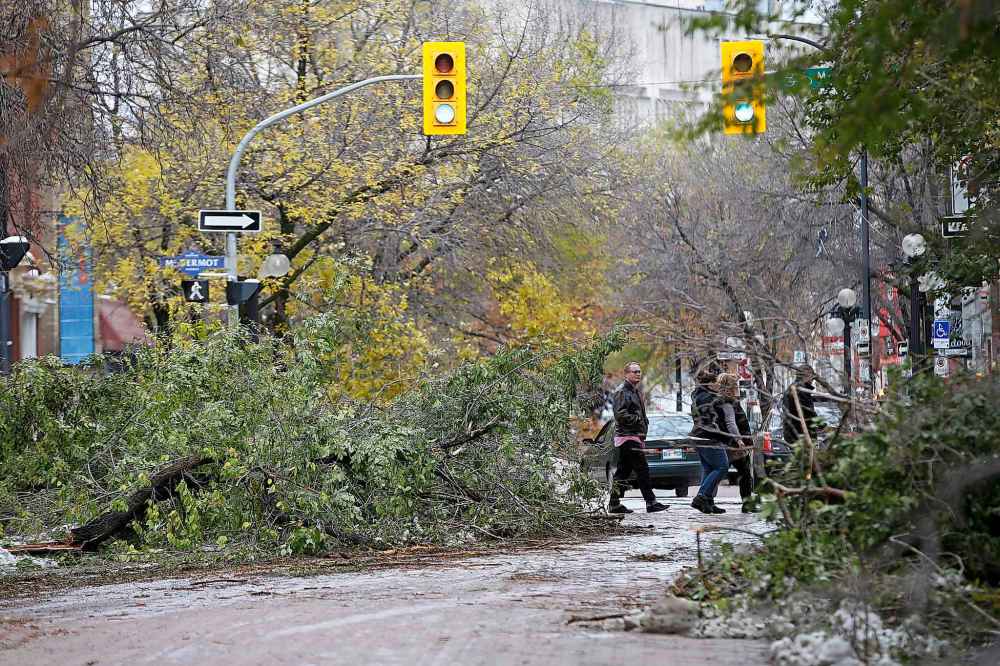
The hardest hit areas have been Neepawa, Dauphin, Ashern, Portage la Prairie and the Interlake, though there is hardly a kilometre of the southern provincial terrain that made it through the weekend unscathed.
In Portage la Prairie and the Interlake, at least 2,000 Hydro poles were knocked down, with many transmission towers downed. On Saturday, the entire city of Portage — all 13,000 residents — were without power, and with lift stations down, everyone in the city was advised not to shower or flush their toilets.
The city was expected to have all power restored by Monday evening.
Aside from the damage to utility infrastructure, and the anxiety and stress caused by the outages and associated evacuations, the most visceral impact the storm had was likely sustained by Winnipeg’s tree canopy.
With thousands of deciduous trees yet to lose their leaves, there was much more surface area on which the snow could stick, and the weight on the branches often proved too much: an estimated 30,000 city-owned trees were knocked down or significantly damaged, with untold amounts more on private property.
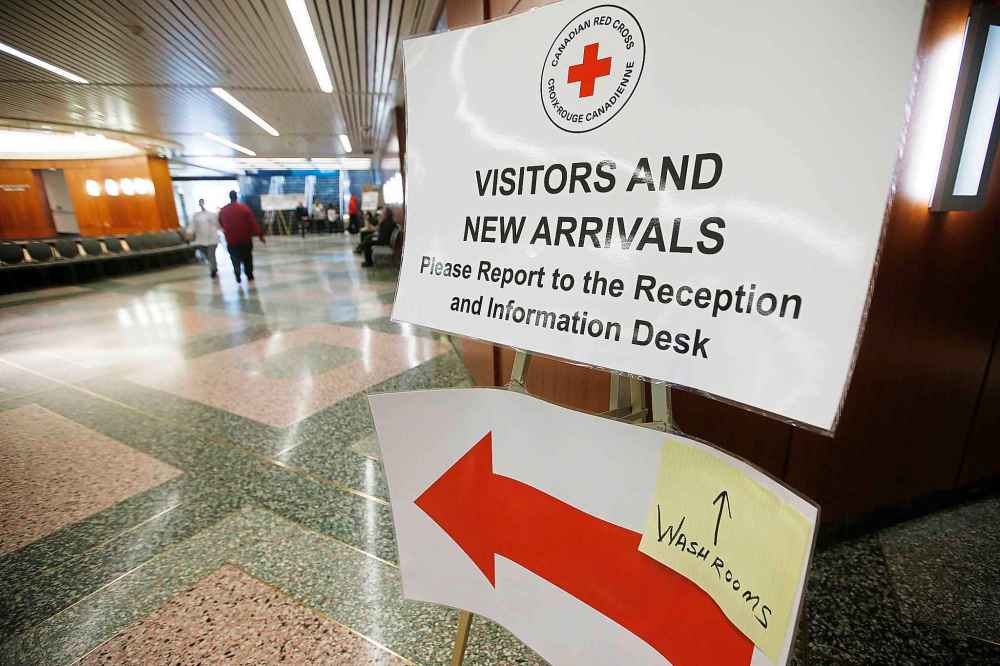
In the Exchange District on Monday, most parking spaces were filled not with Chevrolets, but with discarded branches. In the parking lot between the Metropolitan Centre and the Holy Trinity Anglican Church, ASAP Tree and Stump crews were sawing off damaged limbs and tossing them into the back of a truck, sending loud reverberations through the downtown. And in yards around the city, wooden limbs had snapped power lines, shattered windows and left thousands of homes without power for stretches of time.
“It’s a perfect storm that’s creating a tree apocalypse in Winnipeg,” said Matt Binet, the tree care operations manager of Green Drop, one of dozens of arborist and clean-up services working through the weekend.
“It’s heartbreaking.”
Though exact costs associated with the storm haven’t been confirmed, the city’s emergency manager, Jason Shaw, estimated they could number in the tens of millions. On Tuesday, in an effort to offset that hefty price-tag, Winnipeg mayor Brian Bowman is expected to introduce a motion to the executive policy committee requesting an undisclosed amount of financial support from the province.
Bowman’s state of emergency is intended to be in effect until Nov. 12, and repair and recovery work is expected to last weeks, possibly months.
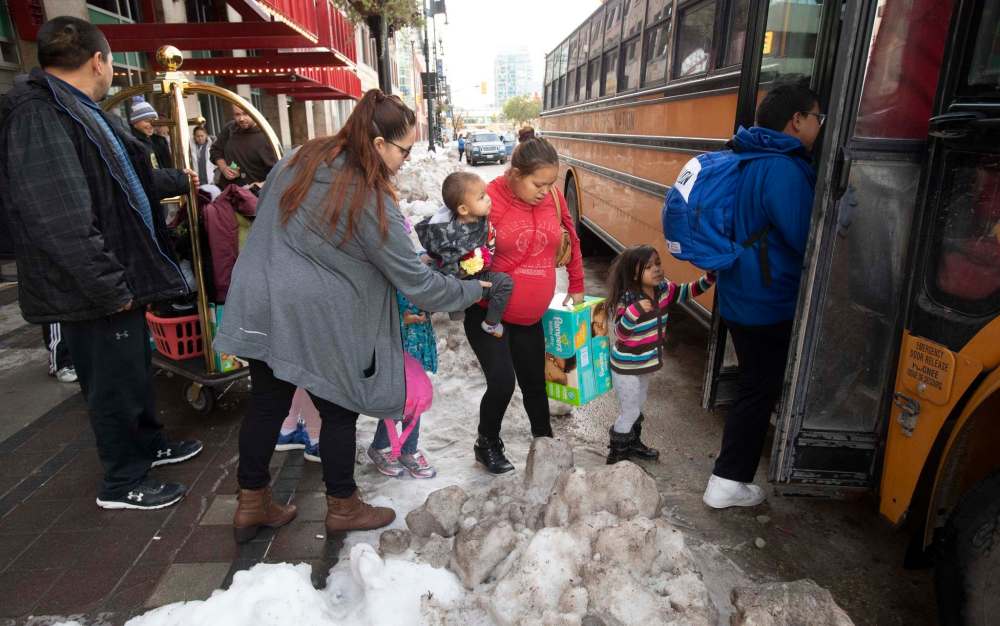
Manitoba Hydro is encouraging its customers to be patient as repairs and restoration efforts continue, and is urging people to avoid contact with any downed power lines. If there is a downed line, a branch or limb touching a line, or any other damage that could directly impact public safety, residents are asked to call 911, otherwise, they are encouraged to call 311, and be patient as the city works its way through a significantly backlogged call system.
(Hydro is also reminding customers not use portable fuel-burning equipment for heating or cooking inside the home, which risks the creation of carbon monoxide. More safety guidelines are available through Hydro’s website and Twitter feed.)
While city residents are awaiting clean-up and restoration, municipalities across the province and First Nations are also left in relative limbo: rural repairs could take as long as 10 days, and thousands of evacuees are in urban hotels or staying with family and friends.
The Red Cross will set up a secondary shelter in Winnipeg should the first one reach capacity.
Fairford resident Lyndsay Anderson said she has no clue when she’ll be back home, and was waiting outside the Red Cross shelter at the convention centre Monday afternoon waiting to find out where she’d be spending the night.

“It’s the first time I’ve been evacuated. Honestly, I’m confused and I don’t know what to do,” she said.
“I have no idea where we’re going next,” said Lydia Daniels, from Long Plain First Nation.
Josephine Thaddeus didn’t either: she boarded a bus taking her to the Holiday Inn, where she was planning to register and hoping to stay, if possible.
Meanwhile, the evacuees — much like the municipal and provincial governments in Manitoba — are only now getting a sense of what’s to come as the personal, environmental and financial costs are calculated.
ben.waldman@freepress.mb.ca
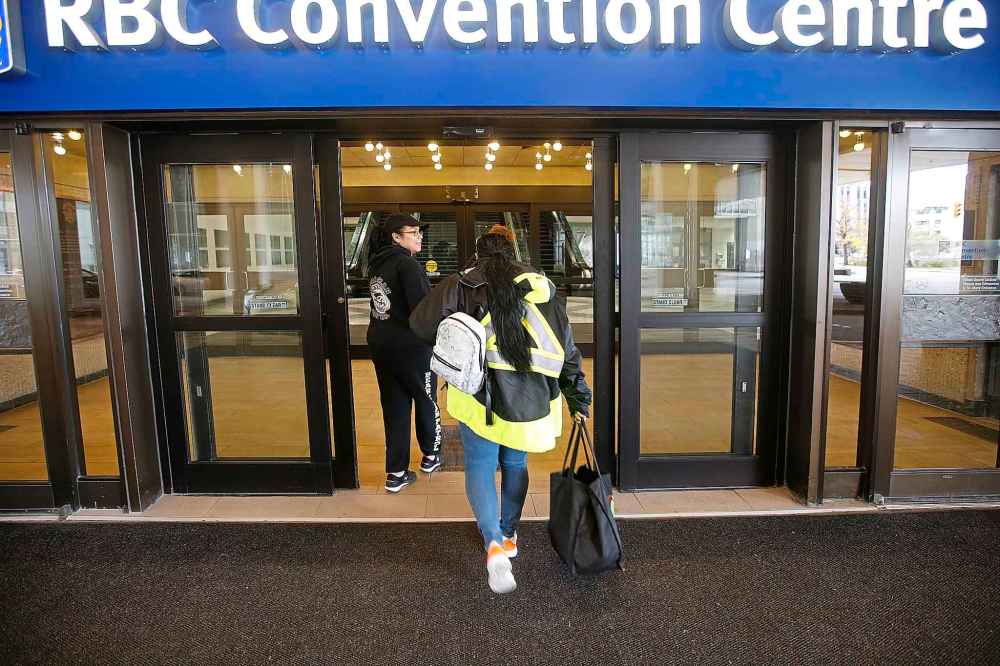

Ben Waldman covers a little bit of everything for the Free Press.
Our newsroom depends on a growing audience of readers to power our journalism. If you are not a paid reader, please consider becoming a subscriber.
Our newsroom depends on its audience of readers to power our journalism. Thank you for your support.
History
Updated on Monday, October 14, 2019 1:41 PM CDT: updates with new photos
Updated on Monday, October 14, 2019 4:48 PM CDT: full write-thru with updated info, new photos
Updated on Monday, October 14, 2019 7:16 PM CDT: Edited, new headline.







